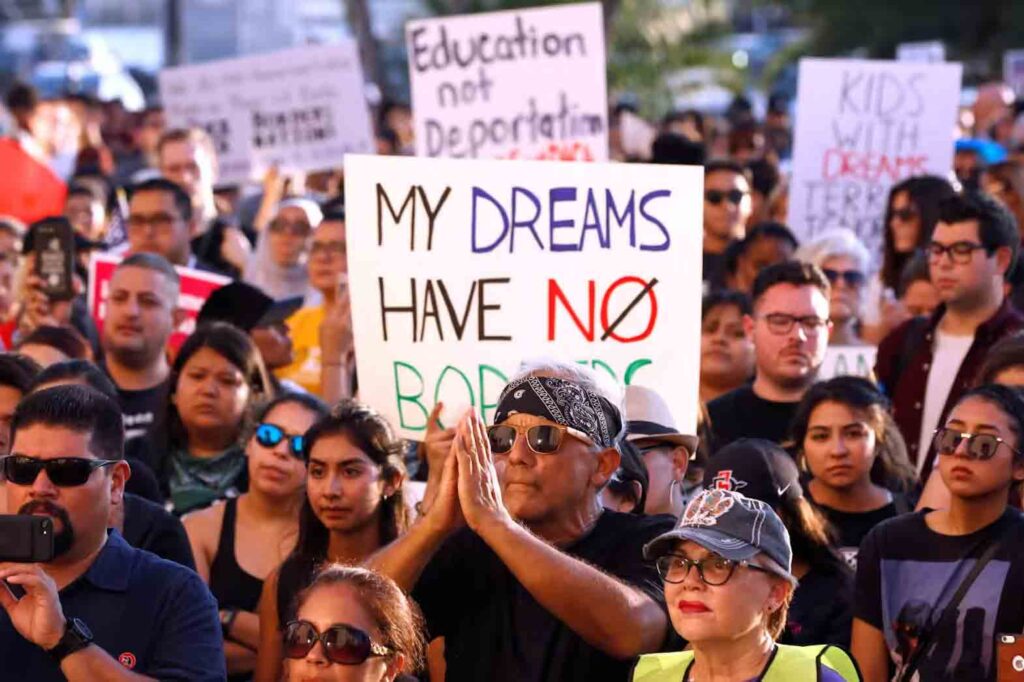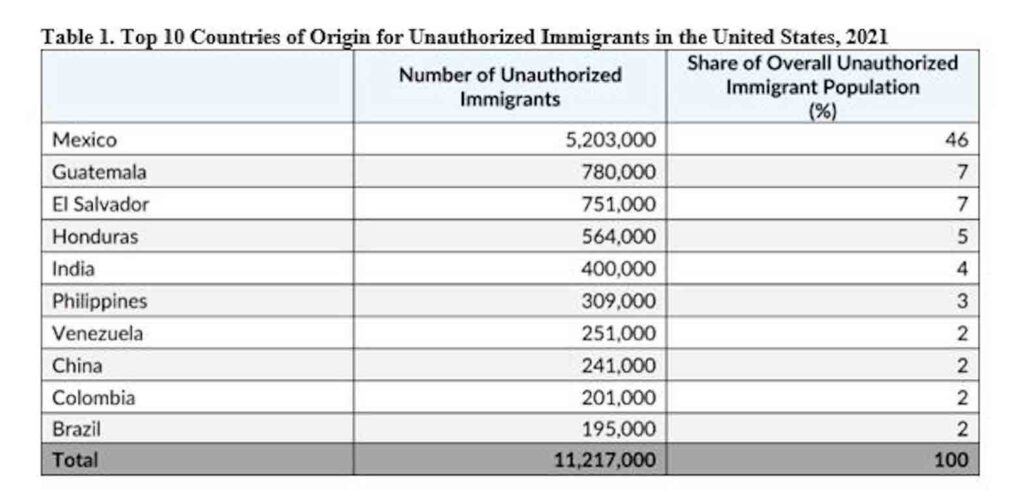Undocumented Filipinos in US now estimated at 309,000

Supporters of Deferred Action for Childhood Arrivals hold a protest rally in San Diego, California. © Reuters File
The Philippines is the sixth top source of undocumented (unauthorized) immigrants in the United States, a population estimated at 309,000 in 2021, according to Sept. 13 report by the Migration Policy Institute in Washington, DC.
The estimated unauthorized immigrant population in the US was at 11.2 million in 2021, up from 11.0 million in 2019 and a larger annual growth rate seen since 2015.
Mexico, Guatemala, El Salvador, Honduras, India, Venezuela, China, Colombia and Brazil are the ten largest populations of undocumented immigrants in the US.
The estimates derive from MPI’s unique methodology, developed with demographer Jennifer Van Hook at The Pennsylvania State University’s Population Research Institute, to assign legal status to foreign-born populations recorded in the U.S. Census Bureau’s American Community Survey (ACS), for which 2021 is the most recent year available.
These 2021 data, however, do not capture the record number of border encounters witnessed in 2022 and the high levels seen this year. They also reflect the population during a period when global mobility was still depressed due to the COVID-19 pandemic.

Top 10 Countries of Origin for Unauthorized Immigrants in the United States, 2021 Source: Migration Policy Institute (MPI) estimates of the U.S. unauthorized immigrant population are developed in collaboration with Jennifer Van Hook of The Pennsylvania State University’s Population Research Institute by subtracting the number of legal immigrants from the total of all immigrants for each country and region represented in U.S. Census Bureau American Community Survey (ACS) data. The number of legal immigrants is estimated by adding up all legal admissions from each country and region in every year—using U.S. Department of Homeland Security (DHS) administrative data—and then reducing this number to account for deaths and emigration of legal immigrants. Finally, the unauthorized immigrant population estimates are adjusted upward slightly to account for the recognized undercount of this population in the ACS. MPI
Moreover, population change always occurs with people exiting the unauthorized immigrant population due to voluntary or forced departure from the United States, death or, in a narrow set of circumstances, access to legal permanent residence.
There growing diversification of the U.S. undocumented population, due to the decade-long decline in Mexican unauthorized immigration and the widening array of nationalities arriving at the U.S.-Mexico border from within and beyond this hemisphere. The diversification also stems from visa overstays by migrants from around the world.

